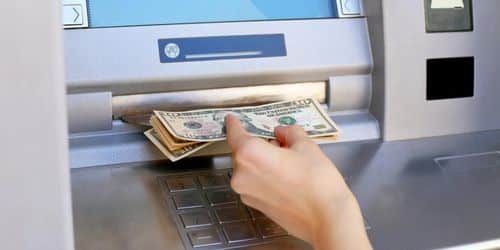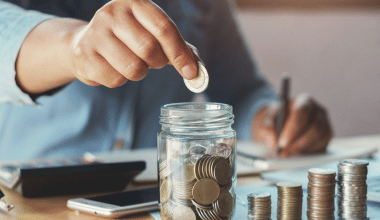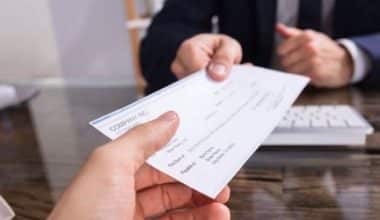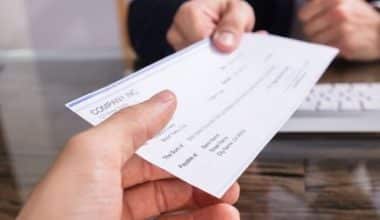With the rise of technology, the way we access our money has changed drastically. ATMs have become a convenient way to withdraw cash in a matter of minutes. But how much money can you take out of an ATM? In this blog post, we’re discussing the limits of ATMs, the factors affecting the amount of money you can take out, and tips for taking money out of an ATM.
An ATM is an automated teller machine that allows you to access your banking account. ATMs are located in public areas such as banks, airports, supermarkets, and gas stations. They’re a convenient way to withdraw cash in a matter of minutes, without needing to wait in line at the bank.
Withdrawing money from an ATM is easy and straightforward. All you need to do is insert your ATM card, enter your PIN, and select the amount of money you wish to withdraw. Depending on the type of ATM you’re using, the limit of money you can take out will vary.
How Much Money Can You Take Out of an ATM?
The amount of money you can withdraw from an ATM will depend on the limit set by your bank. Generally speaking, most banks set a daily limit of $500 to $3000. However, this limit can vary depending on the type of account you have. For example, if you have a premium account, you may have a higher daily limit, whereas if you have a basic account, your limit may be lower.
It’s important to note that the amount of money you can take out of an ATM is usually different from the amount of money you can transfer from your account. You may be able to transfer more money from your account than you can withdraw from an ATM in a single transaction.
How Much Can You Withdraw From an ATM Each Day?
Your ATM maximum withdrawal limit is determined by the bank or credit union with which you bank. ATM cash withdrawal restrictions typically range from $300 to $1,000 per day.
Again, the bank or credit union determines this—there is no set daily ATM withdrawal limit. Your personal bank withdrawal limit may also be affected by the accounts you have and your financial history.
For example, if you’re new to a bank and create a basic checking account, you may have a smaller ATM withdrawal limit than someone who has had a premium checking account with them for ten years. Cash withdrawal limitations at atm may differ for specialty accounts such as second chance checking or student checking.
How Much Money Can You Withdraw From an ATM at Once?
In addition to the bank or credit union’s daily ATM limit, some ATMs may have restrictions on the quantity of cash that can be dispensed per withdrawal. Daily cash withdrawal restrictions at atm may differ from daily purchasing limits.
For example, your bank may limit your ATM withdrawals to $400, while your debit card may allow you to make up to $4,000 in purchases per day. Institutions may keep ATM withdrawal and purchase limitations distinct, or they may establish a third limit on the total amount of money you can withdraw and spend from your account each day.
Again, these constraints are intended to balance the bank’s cash flow while protecting you and your accounts.
Which ATMs allow you to withdraw the most money?
The more cash you can acquire, the greater your bank’s daily ATM withdrawal limit or per-transaction limit.
This implies that if your bank imposes a daily maximum ATM withdrawal limit of $1,000, that’s the most cash you’ll be permitted to withdraw regardless of which ATM you use. This is why it’s critical to read the fine print when opening a new bank account. The terms and conditions should specify how much cash you can withdraw from ATMs.
Even if you don’t carry cash very often, it’s crucial to be able to obtain cash in the amount you require when you need it. If your bank or credit union has a reduced daily ATM cash withdrawal limit, it could be an issue if you ever need more money and are unable to get to a branch to withdraw it.
ATM Withdrawal Limits at Major Banks
Banks differ in how much or how little cash you can withdraw from your checking account at an ATM each day. The bank ATM withdrawal limit for large banks may differ from that of regional or community banks. Daily ATM withdrawal restrictions may also differ across brick-and-mortar banks and internet banks.
The figure below compares daily ATM withdrawal restrictions at top banks, including internet banks and traditional financial institutions. Keep in mind that the restrictions listed below may be subject to exceptions depending on the account type and your banking connection.
| Daily ATM Withdrawal Limits at Top Banks | |
|---|---|
| Bank Name | Withdrawal Limit |
| Ally Bank | $1,000 |
| Bank of America | $1,000 |
| BMO Harris | $1,000 |
| Capital One | $1,000 |
| Charles Schwab Bank | $1,000 |
| Chase Bank | $500-$3,000 |
| Citi | $1,500-$2,000 |
| Citizens Bank | $500 |
| Discover Bank | $510 |
| Fifth Third Bank | $810 |
| HSBC | $500-$1,000 |
| KeyBank | $300-$1,000 |
| Morgan Stanley Bank | $1,500-$5,000 |
| PNC Bank | $500-$1,500 |
| Regions Bank | $808 |
| Truist | $500-$3,000 |
| TD Bank | $1,250-$1,500 |
| Union Bank | $500 |
| U.S. Bank | Dependent on customer relationship |
| Wells Fargo Bank | Dependent on customer relationship |
Previously, Federal Regulation D limited your monthly withdrawals from a savings account to six. Because of the coronavirus epidemic, this rule has been suspended indefinitely. However, many banks continue to limit the number of withdrawals from savings you can make each month. These restrictions apply only to debit card transactions and not to in-branch or ATM withdrawals.
If your bank has such a restriction, you should be aware of it in order to prevent exceeding it. Excess withdrawals above the permitted limit may result in a hefty fee for each transaction.
How to Raise ATM Cash Withdrawal Limits
The simplest approach to increase your ATM withdrawal limits is to call and request one. Your bank or credit union may be ready to temporarily or permanently increase your ATM cash withdrawal limits.
Whether the bank agrees to this can be influenced by:
- How long have you been a customer?
- What types of bank accounts do you have?
- Your account history, including the amount of money you maintain on hand on average
- Whether you’re asking for a temporary or permanent raise,
- Assume you intend to make a significant purchase or go on vacation. In this case, your bank might be ready to extend your ATM withdrawal limit for a few days or weeks. When this temporary period expires, your limit will reset to its former value.
If you want a permanent increase in your daily ATM withdrawal limit, you’ll need to make a case for why the bank should agree to it. Remember that banks impose these limits for security reasons, so if you do receive a greater limit, it’s critical that you keep a tight eye on your debit card. If your card is lost or stolen, someone else could gain access to more of the cash in your account.
How to Get Around ATM Cash Withdrawal Limits
You may have reached your ATM daily cash withdrawal limit and still require additional funds to cover a transaction or for another reason. Here are some strategies for getting your money when you need it:
- Get cash back at checkout when making a purchase
- Withdraw money from a savings account
- Withdraw cash at a branch
- Cash a check
#1. Check Back in Store
If you go shopping, you may be able to earn cash back at the register without it going against your daily ATM withdrawal limit. There are, however, a few caveats.
For starters, it may still count toward your daily purchase or cash withdrawal limit. So be mindful of the limits your bank places on your account for purchases or POS cash withdrawals.
Make a note of the store’s cash-back limit next. Depending on where you shop, you may be limited to $100 in cash back at the checkout. If the retailer has a lower limit, you may need to make numerous purchases to withdraw the entire amount of cash you require. Again, each of these purchases will count against your daily purchasing limit.
#2. Taking Money Out of Savings
Another approach to avoid daily ATM withdrawal limits for a checking account is to withdraw funds from a savings account using an ATM card. There may still be restrictions on these transactions, but you could get cash this way if needed. You can withdraw cash from a bank branch if you don’t have an ATM card.
#3. Cash Withdrawal at a Branch
If you’ve exceeded your daily ATM withdrawal limitations, you can withdraw cash from your checking account in a branch. A teller can withdraw you with cash withdrawals from your checking, savings, or money market account.
If you want a bigger sum of money, you may wish to consider more secure payment methods other than cash. If you’re buying a car, for example, you could use a cashier’s check, a certified check, or even a money order to pay the transaction. This way, you have a paper trail to prove the payment and are not carrying significant sums of cash with you.
#4. Check Cashing
Cashing a check is a fourth way for circumventing ATM withdrawal limits. Simply make the check payable to “Cash,” sign it, and take it to the bank to cash.
Once again, it’s critical to be aware of any constraints the bank may place on check cashing. There may be restrictions on how much cash you can withdraw or how many cheques you can write to “Cash” in a single day.
Factors Affecting the Amount of Money You Can Take Out of an ATM
The amount of money you can take out of ATMs will also depend on a variety of factors. For example, your bank may impose a minimum and maximum limit for each transaction. Additionally, some banks also set a limit on the number of transactions you can make in a day.
Another factor that affects the amount of money you can take out of an ATM is the type of ATM you’re using. Some ATMs have a higher limit than others, so it’s important to check the limit of the ATM you’re using before you make a withdrawal.
Tips for Taking Money Out of ATMs
When taking money out of an ATM, there are a few tips you should keep in mind. First, make sure you’re familiar with the limit of the ATM you’re using. This will help you avoid any surprises when making a withdrawal.
Second, always use an ATM in a secure location. Avoid ATMs in dark or isolated places, as these may be more vulnerable to theft or fraud.
Third, always make sure you’re aware of your surroundings when using an ATM. Be aware of any suspicious people or activities taking place around you.
Finally, always make sure you take your card and any cash you withdraw from the ATM with you. It’s important to never leave your card or cash behind.
Pros and Cons of Taking Money Out of an ATM
Taking money out of an ATM can be convenient, but there are also some drawbacks to consider. On the plus side, ATMs are generally available 24 hours a day and can be accessed from almost any location. Additionally, they provide a secure way to access your funds in a matter of minutes.
However, there are also some drawbacks to taking money out of an ATM. For one, most ATMs have a daily limit, so if you need a large amount of money, you may not be able to withdraw it all in a single transaction. Additionally, if you use an ATM that’s not associated with your bank, you may be charged fees for the transaction.
Alternatives to Taking Money Out of an ATM
If you need more money than an ATM can dispense, there are several alternatives available. For example, you can visit a bank branch and speak to a teller about getting a larger amount of money. Alternatively, you can use an online banking platform to transfer funds from your account to another account.
Another option is to use a payment app such as Venmo or PayPal. These apps allow you to quickly and easily transfer money to another person or account.
Finally, you can also use a prepaid debit card. These cards are reloadable and can be used to make purchases or withdraw cash from ATMs.
Conclusion
Taking money out of an ATM can be a convenient and secure way to access your funds. However, it’s important to be aware of the limits of ATMs, as well as the factors that affect the amount of money you can take out. Additionally, there are several alternatives available if you need to access more money than an ATMs can dispense.
By following these tips and being aware of the different types of ATMs and their limits, you’ll be able to make the most of your ATM experience.
Related Articles
- HOW TO START AN ATM BUSINESS IN 2023: The Ultimate Guide
- CRYPTO ATMS: Are They Legit & How do they Work? (Detailed Guide)
- How to Start an ATM Business: Is it Profitable or Not?
- How to Cash a Check: Simple Step-by-Step Guide
- Soft Credit Check: Meaning and How It Works






